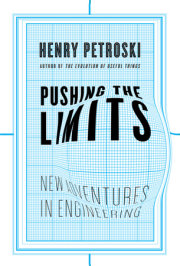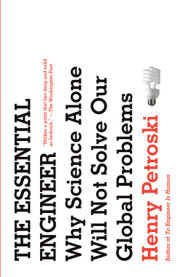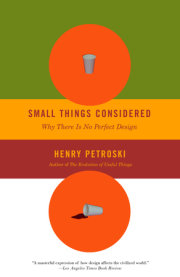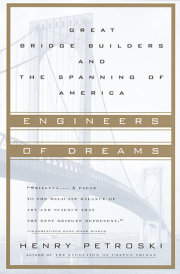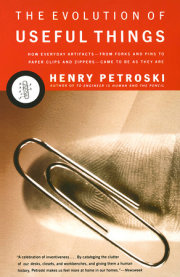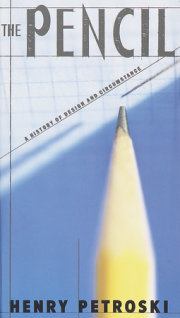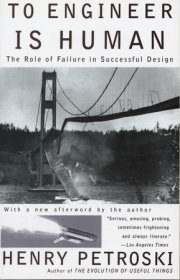Chapter 1
Art in Iron and Steel
Works of engineering and technology are sometimes viewed as the antitheses of art and humanity. Think of the connotations of assembly lines, robots, and computers. Any positive values there might be in such creations of the mind and human industry can be overwhelmed by the associated negative images of repetitive, stressful, and threatened jobs. Such images fuel the arguments of critics of technology even as they may drive powerful cars and use the Internet to protest what they see as the artless and dehumanizing aspects of living in an industrialized and digitized society. At the same time, landmark megastructures such as the Brooklyn and Golden Gate bridges are almost universally hailed as majestic human achievements as well as great engineering monuments that have come to embody the spirits of their respective cities. The relationship between art and engineering has seldom been easy or consistent.
Arguably, the assembly-line process associated with Henry Ford made workers tools of the system, but Ford also wanted to produce automobiles that were affordable to working people, and he paid his own workers sufficiently well that they could save to buy the cars they made. The human worker may have appeared to be but a cog in the wheel of industry, yet photographers could reveal the beauty of line and composition in a worker doing something as common as using a wrench to turn a bolt. When Ford's enormous River Rouge plant opened in 1927 to produce the Model A, the painter/photographer Charles Sheeler was chosen to photograph it. The world's largest car factory captured the imagination of Sheeler, who described it as the most thrilling subject he ever had to work with. The artist also composed oil paintings of the plant, giving them titles such as American Landscape and Classic Landscape.
Long before Sheeler, other artists, too, had seen the beauty and humanity in works of engineering and technology. This is perhaps no more evident than in Coalbrookdale, England, where iron, which was so important to the industrial revolution, was worked for centuries. Here, in the late eighteenth century, Abraham Darby III cast on the banks of the Severn River the large ribs that formed the world’s first iron bridge, a dramatic departure from the classic stone and timber bridges that dotted the countryside and were captured in numerous serene landscape paintings. The metal structure, simply but appropriately called Iron Bridge, still spans the river and still beckons engineers, artists, and tourists to gaze upon and walk across it, as if on a pilgrimage to a revered place.
At Coalbrookdale, the reflection of the ironwork in the water completes the semicircular structure to form a wide-open eye into the future that is now the past. One artist's bucolic depiction shows pedestrians and horsemen on the bridge, as if on a woodland trail. On one shore, a pair of well-dressed onlookers interrupt their stroll along the riverbank, perhaps to admire the bridge. On the other side of the gently flowing river, a lone man leads two mules beneath an arch that lets the towpath pass through the bridge's abutment. A single boatman paddles across the river in a tiny tub boat. He is in no rush because there is no towline to carry from one side of the bridge to the other. This is how Michael Rooker saw Iron Bridge in his 1792 painting. A colored engraving of the scene hangs in the nearby Coalbrookdale museum, along with countless other contemporary renderings of the bridge in its full glory and in its context, showing the iron structure not as a blight on the landscape but at the center of it. The surrounding area at the same time radiates out from the bridge and pales behind it.
In the nineteenth century, the railroads captured the imagination of artists, and the steam engine in the distance of a landscape became as much a part of it as the herd of cows in the foreground. The Impressionist Claude Monet painted man-made structures like railway stations (La Gare Saint-Lazare) and cathedrals (Rouen) as well as water lilies. Portrait painters such as Christian Schussele found subjects in engineers and inventors-and their inventions-as well as in the American founding fathers. By the twentieth century, engineering, technology, and industry were very well established as subjects for artists.
American-born Joseph Pennell illustrated many European travel articles and books, including-among the many with his wife, Elizabeth Robins Pennell-Over the Alps on a Bicycle. Pennell, who early in his career made drawings of buildings under construction and shrouded in scaffolding, returned to America late in life and recorded industrial activities during World War I. He is perhaps best known among engineers for his depiction of the Panama Canal as it neared completion and his etchings of the partially completed Hell Gate and Delaware River bridges.
Pennell has often been quoted as saying, "Great engineering is great art," a sentiment that he expressed repeatedly. He wrote of his contemporaries, "I understand nothing of engineering, but I know that engineers are the greatest architects and the most pictorial builders since the Greeks." Where some observers saw only utility, Pennell saw also beauty, if not in form then at least in scale. He felt he was not only rendering a concrete subject but also conveying through his drawings the impression that it made on him. Pennell called the sensation that he felt before a great construction project "The Wonder of Work." He saw engineering as a process. That process is memorialized in every completed dam, skyscraper, bridge, or other great achievement of engineering.
If Pennell experienced the wonder of work in the aggregate, Lewis Hine focused on the individuals who engaged in the work. Hine was trained as a sociologist but became best known as a photographer who exposed the exploitation of children. His early work documented immigrants passing through Ellis Island, along with the conditions in the New York tenements where they lived and the sweatshops where they worked. His depictions of child labor in the Carolinas brought to public attention how young children toiled for long hours amid dangerous machinery. Hine depicted American Red Cross relief efforts during World War I and, afterward, the burdens war placed on children. Upon returning to New York, he was given the opportunity to record the construction of the Empire State Building, which resulted in the striking photographs that have become such familiar images of daring and insouciance. He put his own life at risk to capture workers suspended on cables hundreds of feet in the air and sitting on a high girder eating lunch. To engineers today, one of the most striking features of these photos, published in 1932 in Men at Work, is the absence of safety lines and hard hats. However, perhaps more than anything, the photos evoke Pennell's "wonder of work" and inspire admiration for the bravery and skill that bring a great engineering project to completion.
Alfred Stieglitz, who intended to study engineering at Berlin Polytechnic, redirected his interests to photochemistry after he acquired a small camera, and while still a student he began to work to gain recognition for photography as an art form on a par with painting. His early work showed steady technical innovation, as he took photographs in snow, in rain, and at night. He is considered the father of modern photography as an art form. In addition to making a series of four hundred prints of his wife, Georgia O'Keeffe, and also four hundred prints of cloud patterns related to emotions, Stieglitz captured with his camera memorable images of New York's Flatiron Building and other structures. (O'Keeffe herself, so well-known for her abstract floral forms and southwestern themes, painted views of the East River, dominated by rooftops and industrial smokestacks, and the Brooklyn Bridge that crossed that river.)
In the 1930s, Margaret Bourke-White, who established a reputation for photographing industrial sites, produced photo essays of Russia and the Soviet Union, and would go on to become the first official woman photojournalist to cover World War II. Some of her most widely known work was produced for Life. Her first assignment for the new publication was to photograph dams under construction in the northwest United States by the Public Works Administration, and she focused her efforts of the enormous (four-mile-long) Fort Peck Dam in northeastern Montana. Her famous portrait of the earthen dam's concrete spillway structure appeared on the cover of the inaugural issue of the magazine, dated November 23, 1936.
Edward Steichen, another pioneer in photography as an art form, was attracted to both the glamour of Hollywood (Greta Garbo and Charlie Chaplin were two of his subjects) and the squalor of the battlefield. He led the photography division of the Army Air Service in World War I, and headed the Navy photography unit in World War II. As director of the photography department of the Museum of Modern Art, he organized The Family of Man exhibition in 1955, a landmark fusion of art and humanity. Steichen also photographed the Flatiron Building.
Joseph Stella, known for painting abstract floral themes (aquatic life and jungle foliage), returned throughout his life to the subject of the Brooklyn Bridge and often abstracted New York City in his paintings. The East River and Brooklyn Bridge also captured the imaginations of poets. In his "Crossing Brooklyn Ferry," Walt Whitman wrote about the river scene that so many commuters saw each day. He was one of them, and he reveled alike in the sunset and the ships in the harbor and the contrast of the foundry chimneys against the sunset. When the Brooklyn Bridge replaced the ferry, it also succeeded it as an inspiration to poets such as Hart Crane, whose book-length poem The Bridge is perhaps the best known.
Although many painters, photographers, and poets have seen art and humanity in the products of engineering and technology, not all artists have. Many in the late-nineteenth-century Parisian artistic and literary community found the Eiffel Tower "an offense to good taste" and characterized it as coming from the "baroque, mercantile imaginings of a machine builder." The builder, Gustave Eiffel, defended his wrought-iron tower as "beautiful in its own right." He also defended the works of engineers generally: "Can one think that because we are engineers, beauty does not preoccupy us or that we do not try to build beautiful, as well as solid and long lasting structures?" He further held that "there is an attraction, a special charm in the colossal to which ordinary theories of art do not apply."
Indeed, an engineer designing a structure is not unlike an artist painting one. Both start with nothing but talent, experience, and inspiration. The fresh piece of paper on the drawing board is as blank as the newly stretched piece of canvas. And the greatest of bridge engineers, especially, have quite explicitly written and spoken of the aesthetic criteria and human values that influenced the shapes, forms, textures, and functions of their structures; the spans themselves stand as tributes to their successful applications of their ideals.
Iron Bridge was only the first in a long line of cast-iron, wrought-iron, and steel structures that have continued to grace the British landscape. Although its form was borrowed from the ancient lines of stone and the details from the classic lines of timber construction, it did not owe its structural success to their principles. In particular, the strength of iron enabled subsequent bridges to be built with much lower profiles, thus at the same time marking them as daring and making them more user-friendly. Thomas Telford was one of the first masters of the shallow metal arch, with his 1814 Craigellachie Bridge over the River Spey near Elgin, Scotland, being an outstanding example. The crossed struts between the thin arch and equally thin deck give the bridge a transparency and accessibility unknown in stone structures. The crenellated towers of the abutment, Telford's acknowledgment of the setting into which the bridge might otherwise have appeared to be an intruder, tie it into the culture of its place. Telford used a similar architectural motif on his Conwy Suspension Bridge, in deference to the Welsh castle to which it leads. Of course, Telford looked well beyond castles for his inspiration. His 1826 Menai Bridge married massive stone towers, which appear to have evolved naturally from the piers under the approach spans, with wrought-iron chains to produce a profile of near-perfect proportions that served as an aesthetic model for suspension bridges well into the twentieth century.
The Brooklyn Bridge, completed in 1883, is almost three times as large as the Menai, and during construction its towers dominated the New York City skyline. The technical challenge that John A. Roebling faced in spanning the East River was to design a structure that would not interfere with shipping. This demanded not only a high roadway beneath which tall-masted ships could pass but also a great span to provide a wide, unobstructed channel. Suspension bridges were Roebling's forte, but the combination of constraints in New York called for one of unprecedented length and height. Rather than design a purely utilitarian structure, he produced a masterpiece. The tall stone towers pierced by the twin Gothic arches through which traffic passes are necessarily massive, but their monumental design makes them feel architecturally right. Roebling's patented steel-wire cables hang with a well-proportioned sag, counterpointed by the taut diagonal stay cables that the engineer included out of respect for the wind and what it could do to an unstayed bridge deck. The bridge deck was designed not only for horses and carriages but also for people, and the elevated walkway that puts the walkers above the road traffic makes the bridge at the same time a brilliant work of engineering, art, and humanity.
A walk across the Brooklyn Bridge is one of the world's great pedestrian experiences. The arched towers are triumphal, not in a military but in a civil-engineering sense. The cables and diagonal stays pull the eye upward to the top of the tower and to the prominent date stone embedded near the top. The high-altitude reminder that the Brooklyn tower dates from 1875 (the Manhattan one is from 1876) makes the walker feel not small and insignificant but part of a larger humanity that could erect this grand edifice with little more than muscle and steam power. To stroll the walkway of the Brooklyn Bridge is to experience the dynamic nature of the bridge itself, with the suspension cables first dipping down to meet the walker at midspan and then rising up again with the spirit to the tower top. The skyscrapers of lower Manhattan appear through the screen of steel as a great backdrop for the bridge itself. It is so grand in its execution that it is easy to forget that the bridge was built for the city, not the city for the bridge. Until recently, the twin towers of the World Trade Center dominated the view and appeared to be inspired by the bridge itself, echoing its twin arches in more modern lines. The bridge's empty arches now serve as reminders of what was once a different skyline, but seeing the sun setting through its network of stone and steel is still as dramatic an event as watching it set over any mountain or sea.
Copyright © 2004 by Henry Petroski. All rights reserved. No part of this excerpt may be reproduced or reprinted without permission in writing from the publisher.


